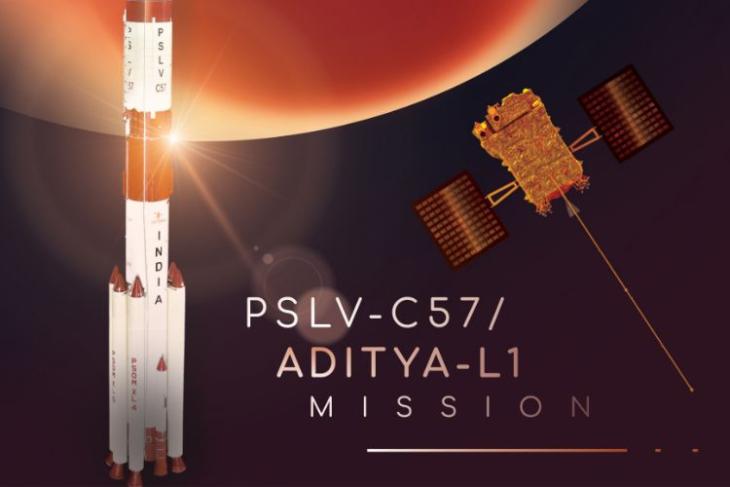Aditya-L1 launch: Meet the women who oversaw the success of the Sun mission
Aditya-L1 launch: Meet the women who oversaw the success of the Sun mission
The project manager of India's first solar mission, Aditya-L1, Nigar Shaji, expressed joy and pride over the mission's successful launch.
Nigar Shaji, 59, the project director whose name stands out among the remarkable women behind India's first solar mission, described the successful launch of Aditya-L1 as a "dream come true".
"This is like waking up in a dream. The fact that PSLV (Polar Satellite Launch Vehicle) was able to launch Aditya-L1 into the desired orbit excites me greatly. Aditya L-1 would benefit the nation and the scientific community at large once it is put into operation, according to Shaji, a farmer's daughter who lives in Tamil Nadu's Tenkasi district.
She earned her engineering degree in electronics and communication from the Tirunelveli Government Engineering College before going on to the Birla Institute of Technology (BITS), Ranchi, for her master's degree. She started working at the Satish Dhawan Space Centre in 1987 after receiving her master's degree and then joined the crew at the UR Rao Satellite Centre.
Shaji has made important contributions to the space agency's remote sensing program as well as being an expert in communications and interplanetary satellite programs. Additionally, she served as the Resourcesat-2A associate project director, an Indian remote sensing satellite for managing and monitoring national resources.
Another female scientist, Annapurni Subramaniam, made sure that India's first mission to study the Sun went without a hitch while Shaji assumed leadership of the mission's launch-related activities.
The principal instrument on board the Aditya-L1 spacecraft was created by the autonomous Indian Institute of Astrophysics, whose head is Subramaniam. The institute falls under the purview of the Department of Science and Technology.
Subramaniam, a native of a village in Kerala's Palakkad region, is descended from a musical family. Her areas of expertise include open and globular star clusters, star formation and pre-main sequence stars, galactic architecture, Magellanic clouds, and stellar population. She earned a Ph.D.
in Physics from the IIA, which she now directs.
The main instrument that is carried by Aditya-L1 was created by us. It (VELC) is essentially a coronograph that constantly observes the Sun during a total solar eclipse. We will be able to see the Sun's interior for the first time thanks to this mission, she said.
The Pragyan Rover module of the Vikram Lander was placed in "sleep mode" on Saturday, according to a statement made by the Indian Space and Research Organization (ISRO). The next sunrise is anticipated to occur on September 22, 2023, and ISRO wished for a successful awakening for yet another round of assignments.
"The Rover finished its tasks. It is now securely parked and in the sleeping position. Payloads for APXS and LIBS are disabled. The Lander uses several payloads to transmit data to the Earth. The battery is fully charged right now. The solar panel is set up to catch the light on September 22, 2023, when the next sunrise is anticipated. Keep the receiver on. wishing for a fruitful awakening for a new set of tasks. Otherwise, it will remain there permanently as India's lunar envoy, according to ISRO.
"The Vikram lander and Pragyan rover are still operational. After the successful launch of the Aditya L1 sun mission from the Satish Dhawan Space Center in Sriharikota, ISRO Chairman Somanath earlier said, "We are starting the process of placing both of them into sleep mode in the next one to two days as they need to tolerate the lunar night."
'Pragyaan' and 'Vikram', the lander and rover for the lunar mission, respectively, were performing properly and would be placed to "sleep" soon to withstand the night on the Moon, according to the space agency's chief S Somanath, who made the announcement hours earlier.
"The Rover finished its tasks. It is now securely parked and in the sleeping position. Payloads for APXS and LIBS are disabled. The Lander transmits data from these payloads to the Earth, according to an update from ISRO posted on social networking platform X.
The solar panel was currently set up to receive light during the upcoming sunrise, which is anticipated to occur on September 22, 2023, and the battery was fully charged.
"The phone is still on. I'm hoping for a productive start to another round of assignments! Otherwise, it will remain there permanently as India's lunar envoy, it stated.
The rover has traveled away from the lander by roughly 100 meters, according to Somanath earlier in the day.
And since they must endure the night, we will begin the process of forcing both of them to sleep in the next one to two days, he added.
The Chandrayaan-3 mission consists of three modules: the propulsion module, which moved the lander and the rover module into a 100-kilometer lunar orbit; the lander module, which carried out the lunar craft's soft landing; and the rover module, which is used to explore the moon's surface.


.png)
India 🤩🤩
ReplyDelete